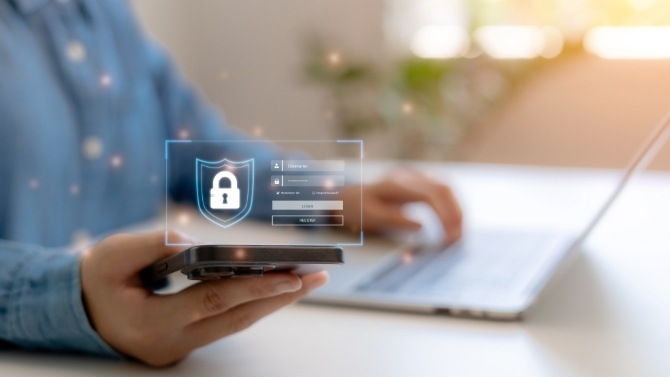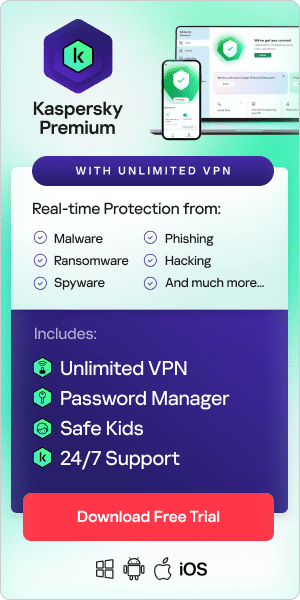
Security is a significant concern in the digital landscape, with users always trying to stay ahead of a constantly evolving threat landscape. Hacking, phishing, and malware are just a few of the many cyber threats that users must continuously safeguard against. However, there are numerous security measures that users can implement to keep their data and devices safe.
Many businesses, organizations, and service providers also implement measures to keep their networks, systems, and customers’ data safe. Among these are two identity verification processes known as authentication and authorization. While the two terms are often used interchangeably, they perform slightly different functions, which means they must be used together to offer the highest level of security. This integration reinforces that while authentication methods advanced in 2024, authorization must evolve to match, ensuring that secure, verified identities have proper permissions within the system. Understanding the nuances of authentication vs authorization is important for protecting users in the complex world of cybersecurity.
What is authentication?
In cybersecurity, authentication – sometimes called AuthN - is a process that allows users to verify their identity or that of their device. Almost all electronic devices or online services require some type of authentication to access secured systems or data. Usually, this is something that - presumably – only a verified user would have. For example, when signing into an email account or social media profile, a user may be prompted to enter a username and password. Behind the scenes, the host system then verifies these login credentials to those stored on its secure database – if they match, it believes the user is valid and grants them access to the account.
Essentially, authentication is a form of identity verification and offers a layer of security for systems, accounts, and software. It ensures that only authorized users can access sensitive data or other resources.
Why is authentication important?
Security authentication is a crucial part of cybersecurity because it works to verify that users are who they claim to be. It can be used in various ways to prevent unauthorized access to things like corporate networks and user accounts. There are numerous reasons why authentication is useful to private individuals and corporations, including:
- Protecting sensitive personal and corporate data.
- Reducing the risk of data breaches and further issues such as identity theft or financial fraud.
- Ensuring only explicitly authorized users can access data and accounts.
- Maintaining accurate access records so that it’s clear who accessed what and when.
- Securing networks, protected resources, and devices from threat actors.
Types of authentication
To properly understand the user authentication definition, it’s essential to know what the process looks like. Security authentication requires users to pass an identity verification by presenting the correct authentication factor. These might be a:
- Knowledge factor: something the user knows, like a password.
- Possession factor: something the user has, usually a phone or security token that can be used to receive one-time passwords (OTPs) or generate access codes.
- Inherence factor: something that’s physically unique to the user – this is usually biometrics like a fingerprint or facial recognition.
- Location factor: in this case, verification is based on a user’s location.
- Time factor: here, verification can only occur at certain set times.
In practice, authentication examples may look like:
- Passwords: These are the most common form of identity verification and are used everywhere to log into devices and accounts – however, they are generally one of the least secure authentication protocols, which is why experts suggest best practices such as changing passwords regularly and using a secure password manager.
- One-time password: These system-generated passwords are usually sent to users by email or text message to allow them to securely log into an account or device once – you’ll often see these used in banking transactions, for example.
- Tokens: This form of authentication grants access to codes generated from an encrypted device.
- Biometric authentication: This form of identity verification uses an inherence factor – usually a user’s face or fingerprint – to grant access to devices or accounts – this is commonly used on smartphones and laptops now.
- Multi-factor authentication: This requires at least two authentication factors – such as a password and biometrics - to give users access.
- Certificate-based authentication: For this, users offer identity verification with a digital certificate that combines their credentials with a third-party certification authority’s digital signature – the authentication system checks the certificate’s validity and then tests the user’s device to confirm the identity.
- Device authentication: This method of security authentication is specifically used to verify devices like phones and computers before granting them access to a network or service – it’s often used alongside other methods like biometric authentication.
- Authentication apps: Some businesses and organizations now use these third-party apps to generate random security codes to access systems, accounts, and networks.
- Single Sign-on (SSO): This allows a user to log into multiple apps through one central provider – for example, signing into Google gives access to Gmail, Google Drive, and YouTube.
How is authentication used?
Security authentication is used in many ways daily. In general, it’s businesses and organizations that use authentication protocols to set internal and external access controls. This limits how users can access their networks, systems, and services. The average person will use numerous authentication examples every day to carry out certain functions, such as:
- Using login credentials to access corporate systems, emails, databases, and documents at work, especially when working remotely.
- Deploying biometric authentication to unlock and use their smartphones or laptops.
- Using multi-factor authentication to log into online banking apps and execute financial transactions.
- Logging into e-commerce sites with a username and password.
- Using a one-time password to authorize credit card charges when making online purchases
- Using tokens, certificates, or passwords to access electronic health records.
What is authorization?
Although people often confuse authentication with authorization, the two processes have different functions. After a system verifies a user’s identity with security authentication, authorization – sometimes called ‘AuthZ’ - takes over to dictate what the user can do once within a system or account. Essentially, authorization processes control what resources a specific user can access – such as files and databases – and what operations they can execute within a system or network. For example, within a corporate network, an IT administrator may be authorized to create, move, and delete files, while the average employee may only be able to access files on the system.
Types of authorization
In general, authorization restrictions how much access a user has to data, networks, and systems. But there are different ways this can work. Below are some of the most used authorization examples in cybersecurity:
- Discretionary Access Control (DAC) allows administrators to assign each specific user very specific access based on identity verification.
- Mandatory Access Control (MAC) controls authorization within operating systems, managing permissions for files and memory, for example.
- Role-Based Access Control (RBAC) enforces the controls built into the DAC or MAC models, configuring systems for each specific user.
- Attribute-based Access Control (ABAC) uses attributes to enforce controls based on defined policies – these permissions can be granted to a specific user or resource or across an entire system.
- Access Control Lists (ACLs) allow administrators to control which users or services can access a particular environment or make changes within it.
How is authorization used?
As with authentication, authorization is crucial to cybersecurity because it allows businesses and organizations to protect their resources in several ways. For this reason, experts recommend that each user receives the lowest level of permissions necessary for their needs. Here are some ways in which authorization can offer useful security measures:
- Allowing authorized users to safely access secure features – for example, to allow banking customers to access their individual accounts on mobile apps.
- Preventing users of the same service from accessing each other's accounts by using permissions to create partitions within the system.
- Using restrictions to create different levels of access for Software-as-a-Service (SaaS) users – allows Saas platforms to offer a certain level of service to free accounts and a higher level of service to premium accounts.
- Ensuring separation between a system or network’s internal and external users with the appropriate permissions.
- Limiting the damage of a data breach – for example, if a hacker gains access to a company’s network through an employee account with low permissions, they’re less likely to be able to gain access to sensitive information.
Authentication vs authorization: How are they similar or different?
It’s important to understand the similarities and differences in authentication vs authorization. Both have crucial roles to play in user identity verification and keeping data and systems secure, but there are also some key differences in what they do, how they work, and how they are best implemented.
Differences between authorization and authentication
Some of the main differences between authorization and authentication are:
- Function: authentication is essentially identity verification, whereas authorization determines what resources a user can access.
- Operation: Authentication requires users to present credentials for identity verification; authorization is an automatic process that manages user access according to pre-set policies and rules.
- Timing: Authentication is the first step in the process, occurring when a user first accesses a system; authorization happens after the user’s identity is successfully verified.
- Information sharing: authentication requires information from the user to verify their identity; authorization uses tokens to verify that the user’s identity has been authenticated and apply the appropriate access rules.
- Standards and methods: Authentication usually uses the OpenID Connect (OIDC) protocol and passwords, tokens, or biometrics for verification; authorization often uses OAuth 2.0, and methods like Role-Based Access Control (RBAC).
Similarities of authentication vs authorization
Authentication and authorization are both essential parts of network security and access management and therefore have many similarities. Both processes:
- Are used to keep systems, networks, and data secure.
- Operate in sequence, with authentication first performing identity verification before authorization establishes access permissions.
- Define user management, to ensure only authorized users can access the relevant resources.
- Use similar protocols to carry out their functions.
The need for authentication and authorization in cybersecurity
Since authentication and authorization work differently to offer separate layers of security for networks, data, and other resources, they need to be used in tandem to create a fully secure environment. Both processes are required to keep user data separate and secure. Authentication prompts users to complete an identity verification process to access the system, and after this, authorization determines what systems and data the customer can access – usually just their own.
Authentication is important because it:
- Secures access for each user, keeping their data secure.
- Simplifies user management with Single Sign-On (SSO), allowing them to access numerous cloud services with one set of login credentials.
- Offers an enhanced user experience, often by offering simple verification methods.
Authorization matters because:
- It enforces least privilege principles so that users only have access to resources that are necessary to their role.
- It allows for dynamic access control so that administrators can change access policies in real-time, offering more flexible security.
Related Articles:
Related Products and Services:

